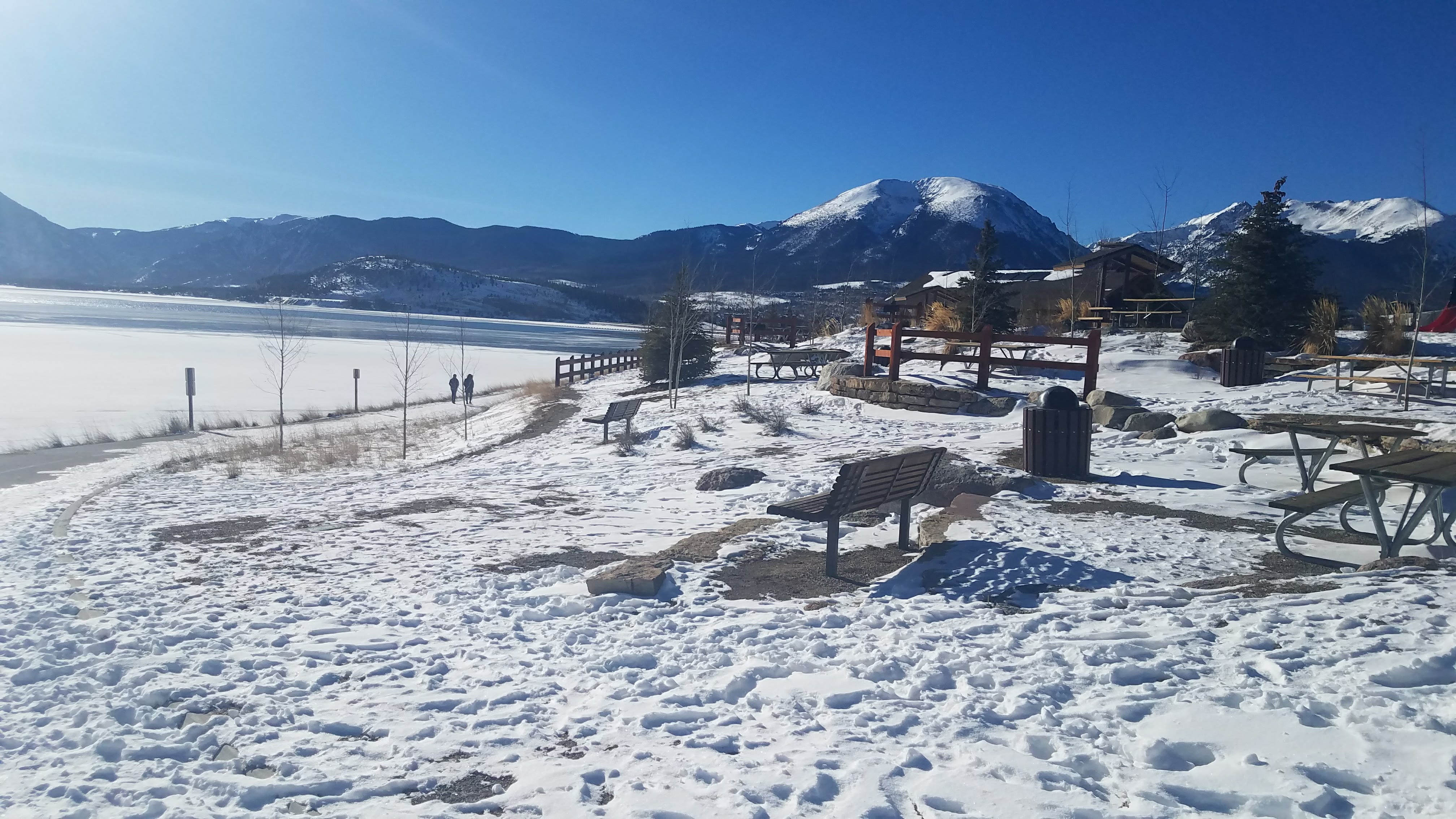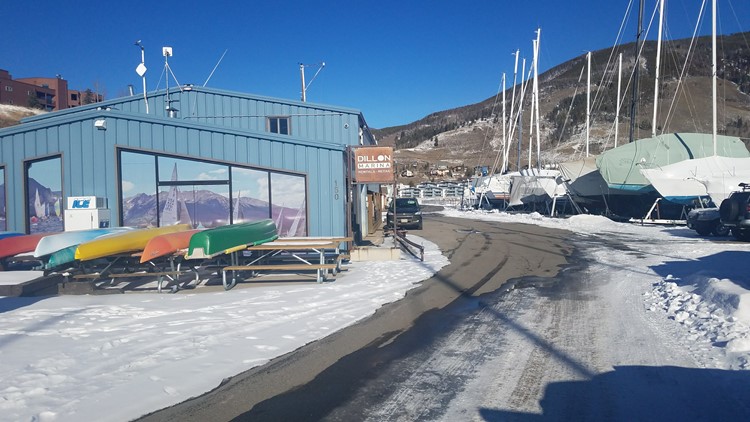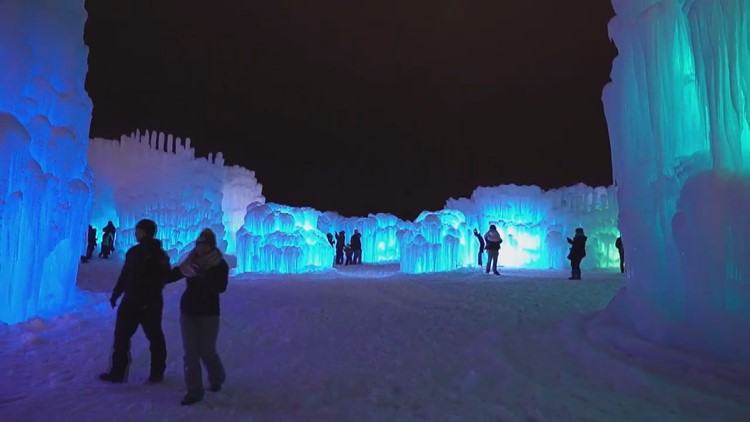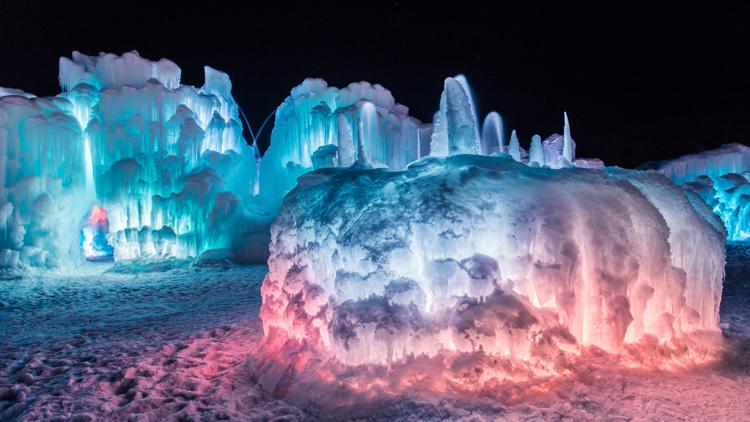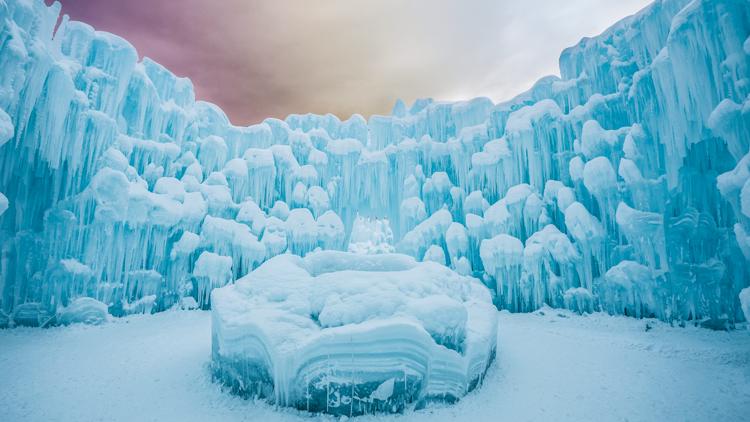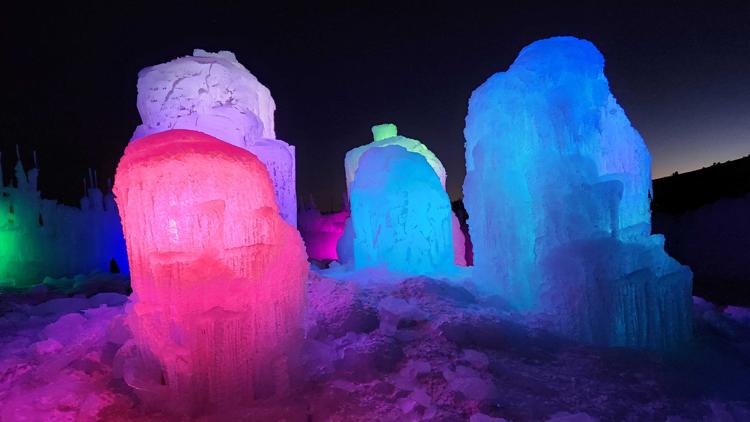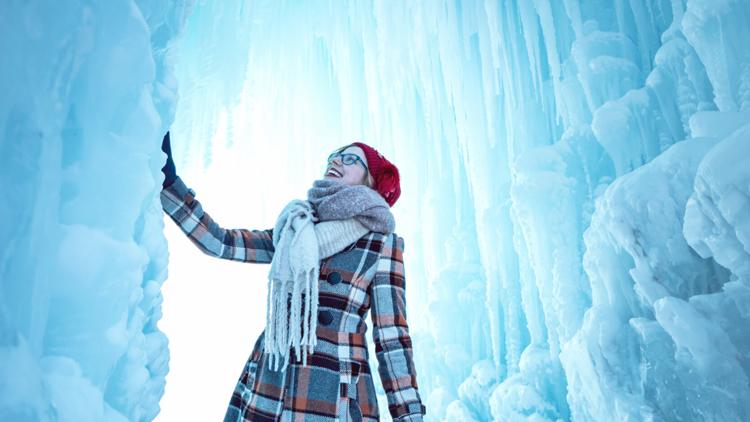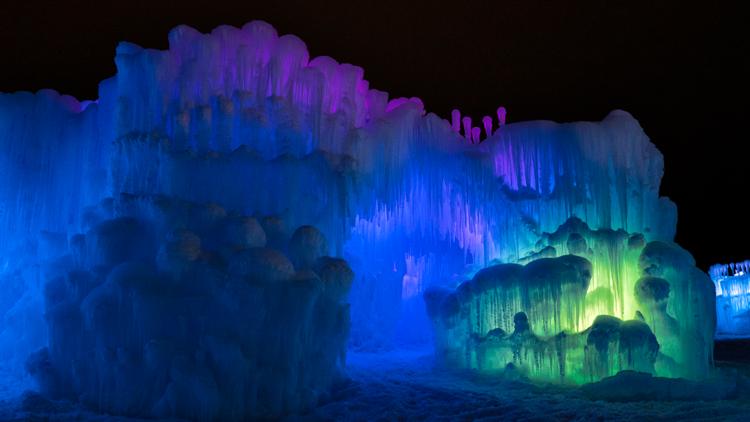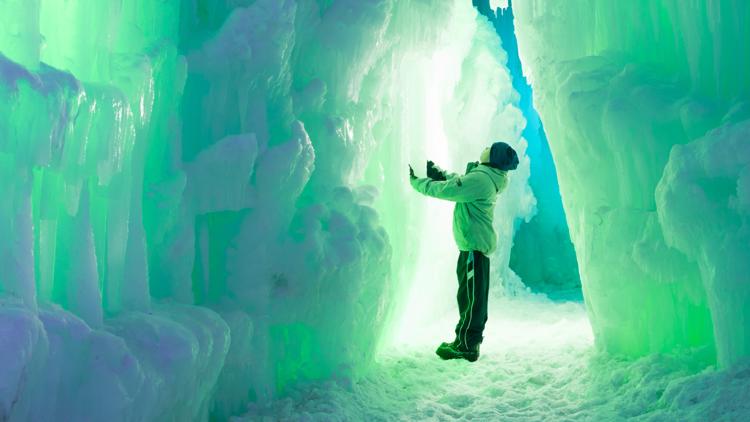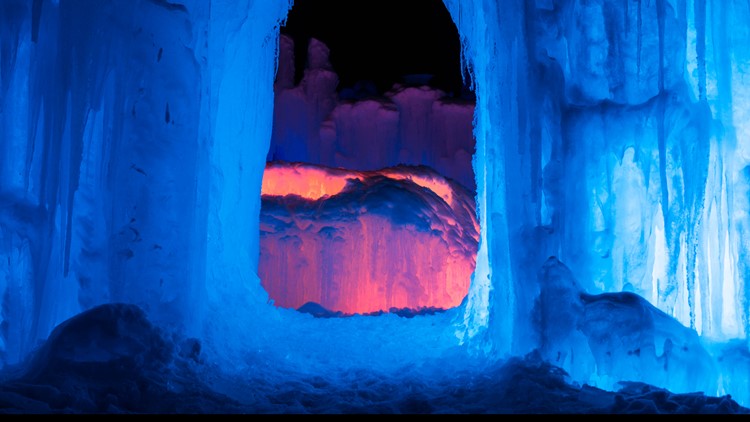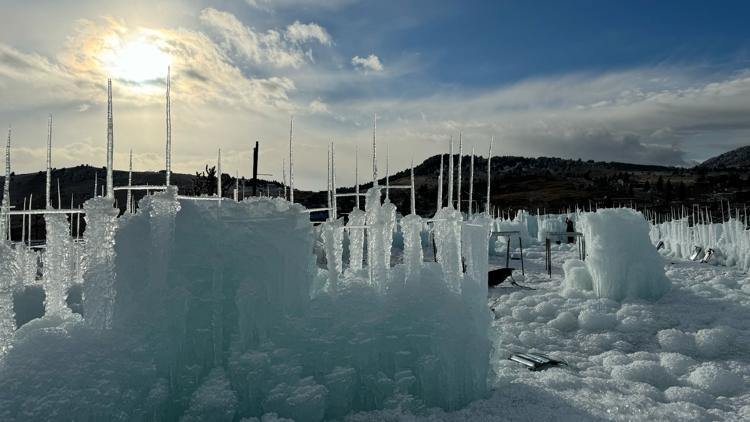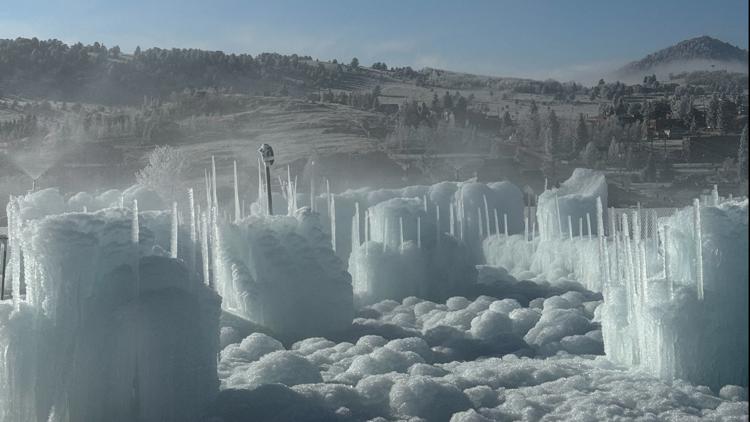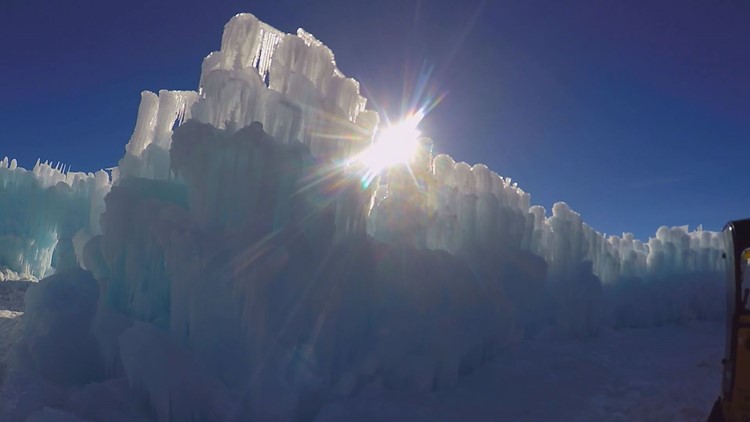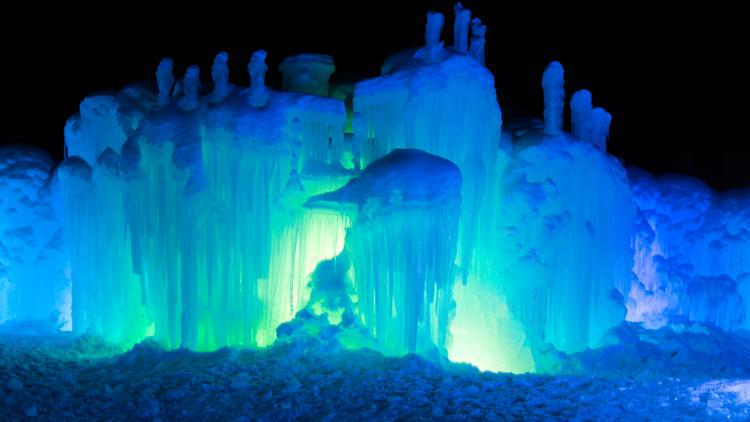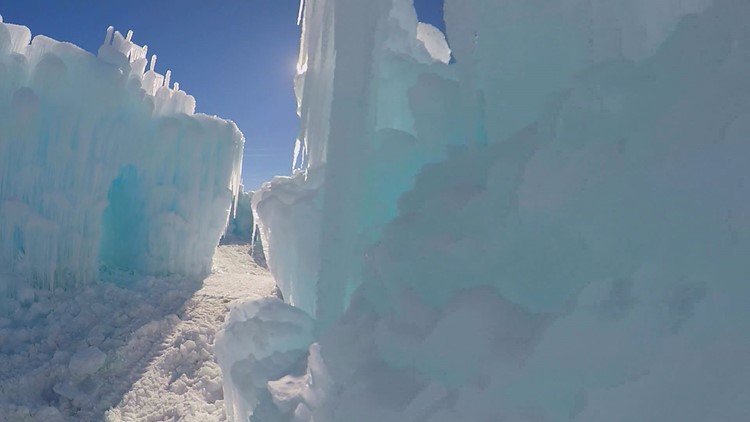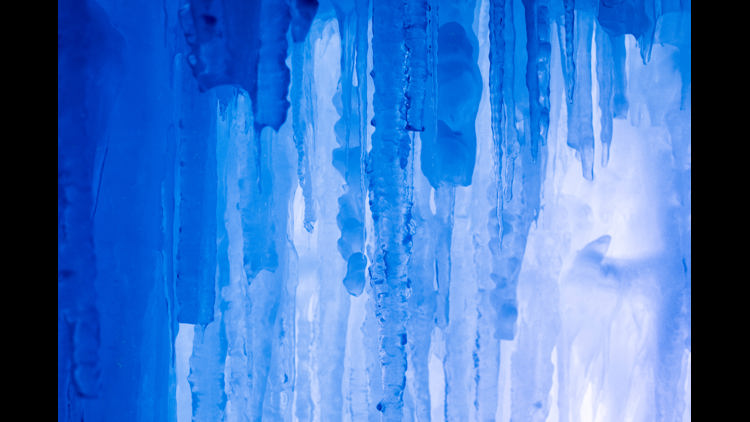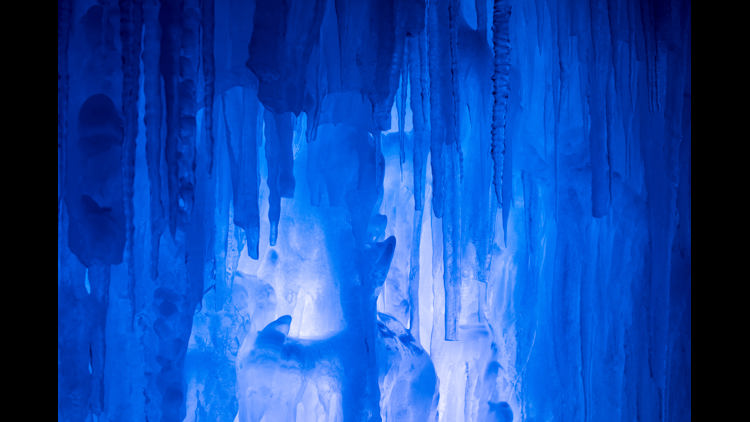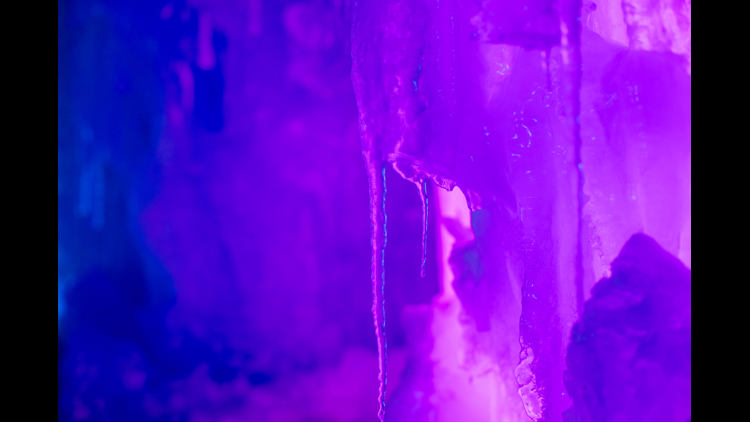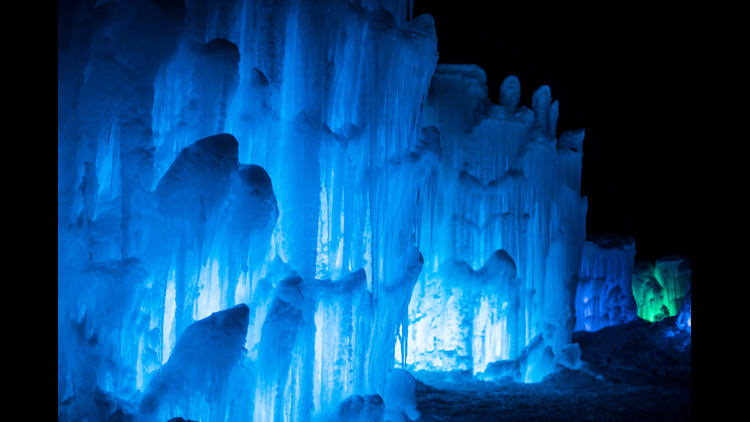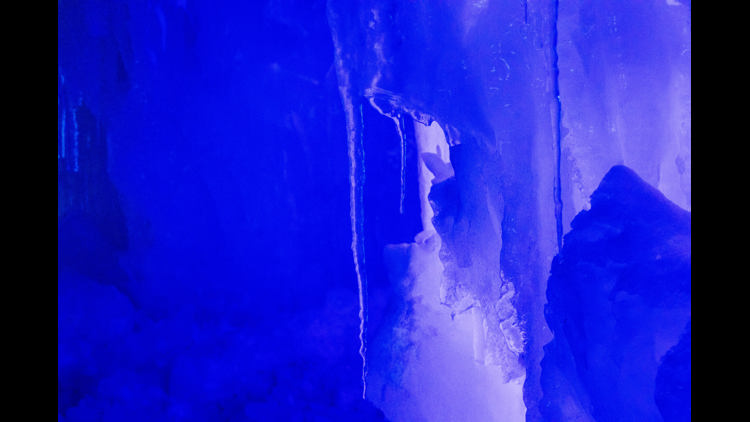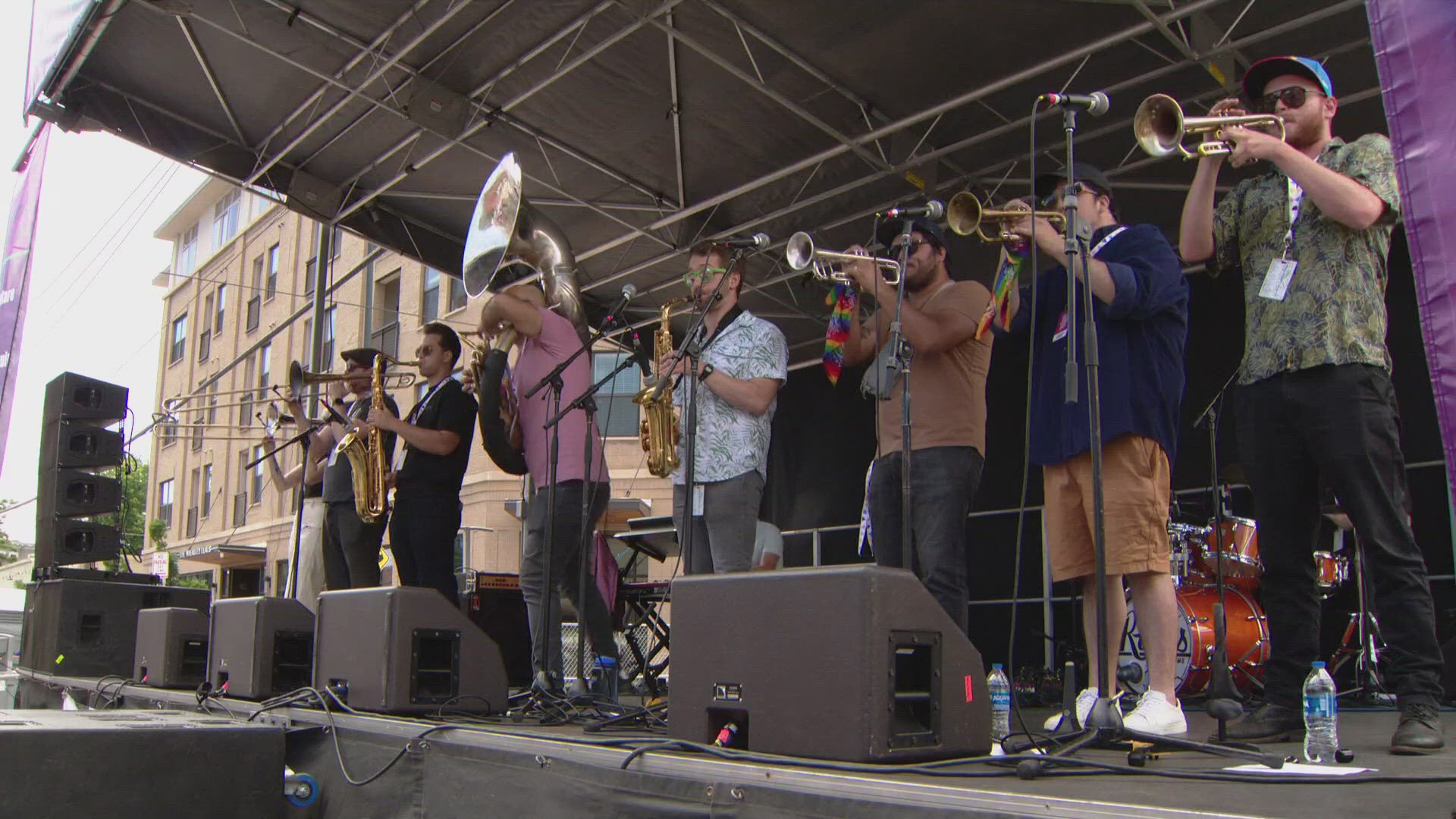There are plenty of reasons to pack up the car and head west to the popular ski town of Dillon.
Located 70 miles west of Denver along I-70, it’s close to six of Colorado’s ski resorts (Keystone, Arapahoe Basin, Breckenridge, Copper Mountain, Vail and Beaver Creek) making it an ideal stop for a winter getaway.
Join our photo tour of Dillon, Friday on Instagram.
Take a photo tour of Dillon, Colorado
Another of the biggest reasons to visit Dillon right now is for the ice castles. The stunning castles are the brainchild of artist Brent Christensen. They are open to the public, allowing for a fable-like tour through frozen tunnels, walkways, towers and archways.
The castles – located in Dillon Town Park on the eastern end of town — cover about three-quarters of an acre and are lit up with colored lights at night, making for a stunning photo opportunity. The castles opened in late December and are expected to last at least eight weeks.
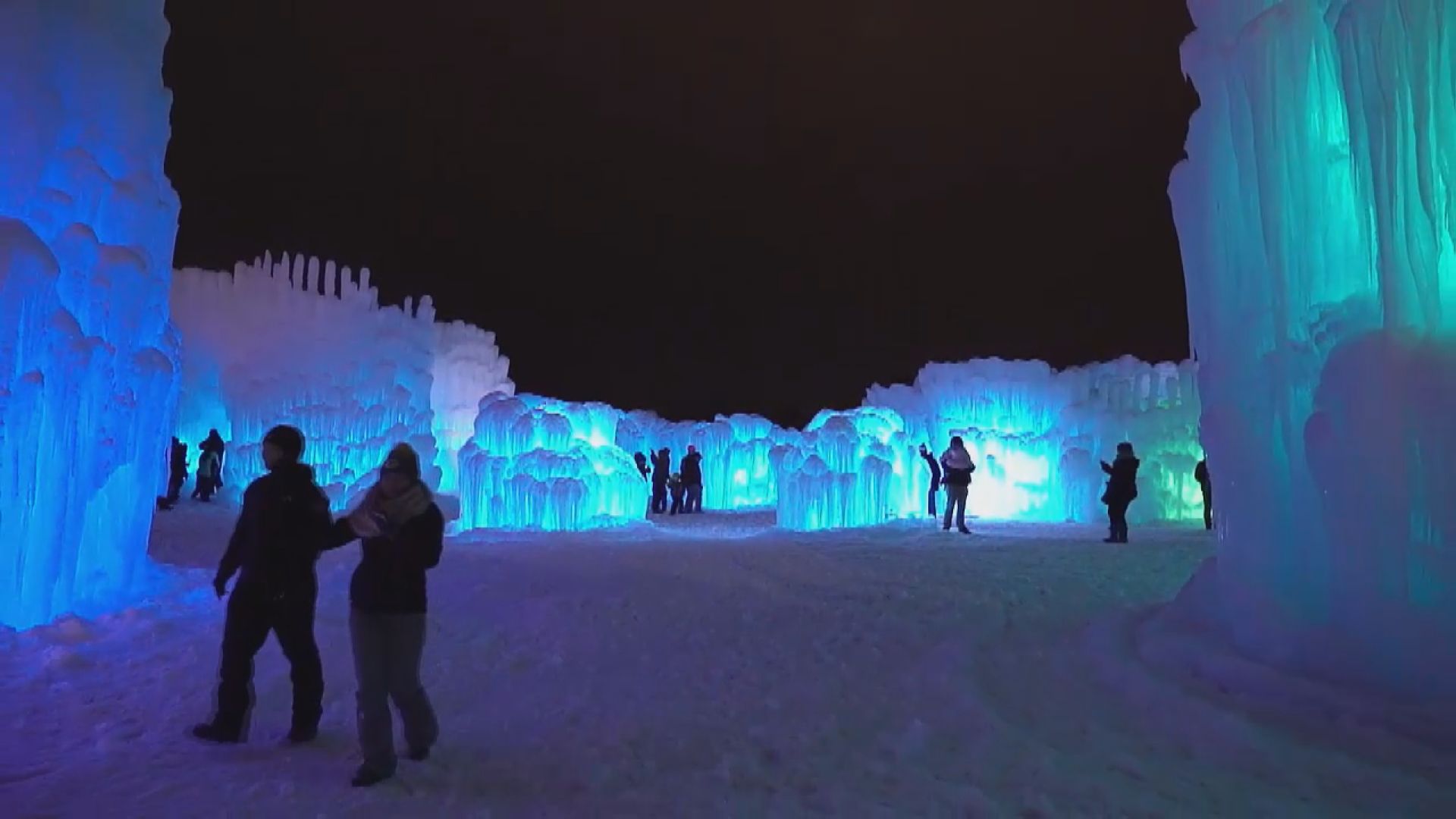
Dillon is also home to the stunning Dillon Reservoir, a popular setting for fishing, hiking, sailing and more both in the summer and winter.
Compared to many mountain towns, Dillon is more on the affordable side of things. The median home price of all-size properties is $388,500, while the median rent is $2,350 (again for all-size properties), according to real estate website Trulia.com.
This coming summer, on Fridays from June 8 through Sept. 14, Dillon is hosting a farmer's market, complete with Colorado-grown, farm-fresh produce, artisan goods, live music and family-friendly entertainment.
Old Dillon
In 1960, the town of Dillon was bustling. Home to 814 residents, it was the largest town in Summit County. But, it also needed to move.
The Denver Water Board wanted to create a new dam and the place where Dillon sat would eventually be 250 feet under water. So, they moved the town. For the fourth time.
Dillon was originally built as a stage stop and trading post in the 1880s. At that time, it was on the northeast side of the Snake River in the Blue River Valley. The town, named after prospector Tom Dillon, was officially incorporated in 1883.
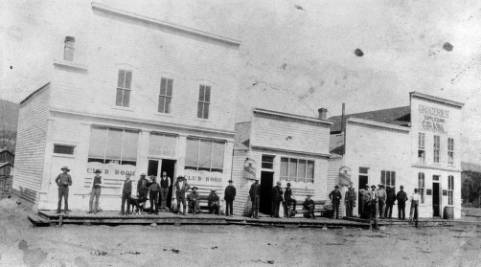
But when the Denver and Rio Grande Railroad expanded into the area it bypassed Dillon. Wanting to be closer to the tracks and therefore have a better chance to survive and grow, the town was relocated to the western side of the Blue River.
Not long after, a second railroad arrived from the northeast. Again hoping to make it easy for expansion the town moved for a second time. This town site, established in 1892 at the confluence of the Blue River, Snake River and Tenmile Creek, allowed for one train station for both rail lines.
Relocation for the Dillon Dam
By the early 1900s the Denver Water Board recognized it needed to do something to meet the growing needs of the expanding city. Eventually they decided on damming the Blue River and diverting water to Denver.
The board bought water rights for the Blue River Valley and slowly began buying land. During the Great Depression, many Dillon residents were not able to pay property taxes so sold their property to Denver Water for back taxes. They also bought land on a hillside along what would soon be the shore of the new reservoir for the new town.

By 1956, the remaining residents were told they had to sell and be out by September, 1961.
On September 15 of that year, the process to relocate Dillon for the fourth and final time began.
Moving the town of Dillon
Those who wanted to move homes and businesses from the Old Dillon to the new town site were responsible for paying for the cost to transport those buildings. So, many decided not to and instead began rebuilding or simply moved away.
However, a few did choose to make the move. At least ten homes were uprooted and relocated to the New Town of Dillon.
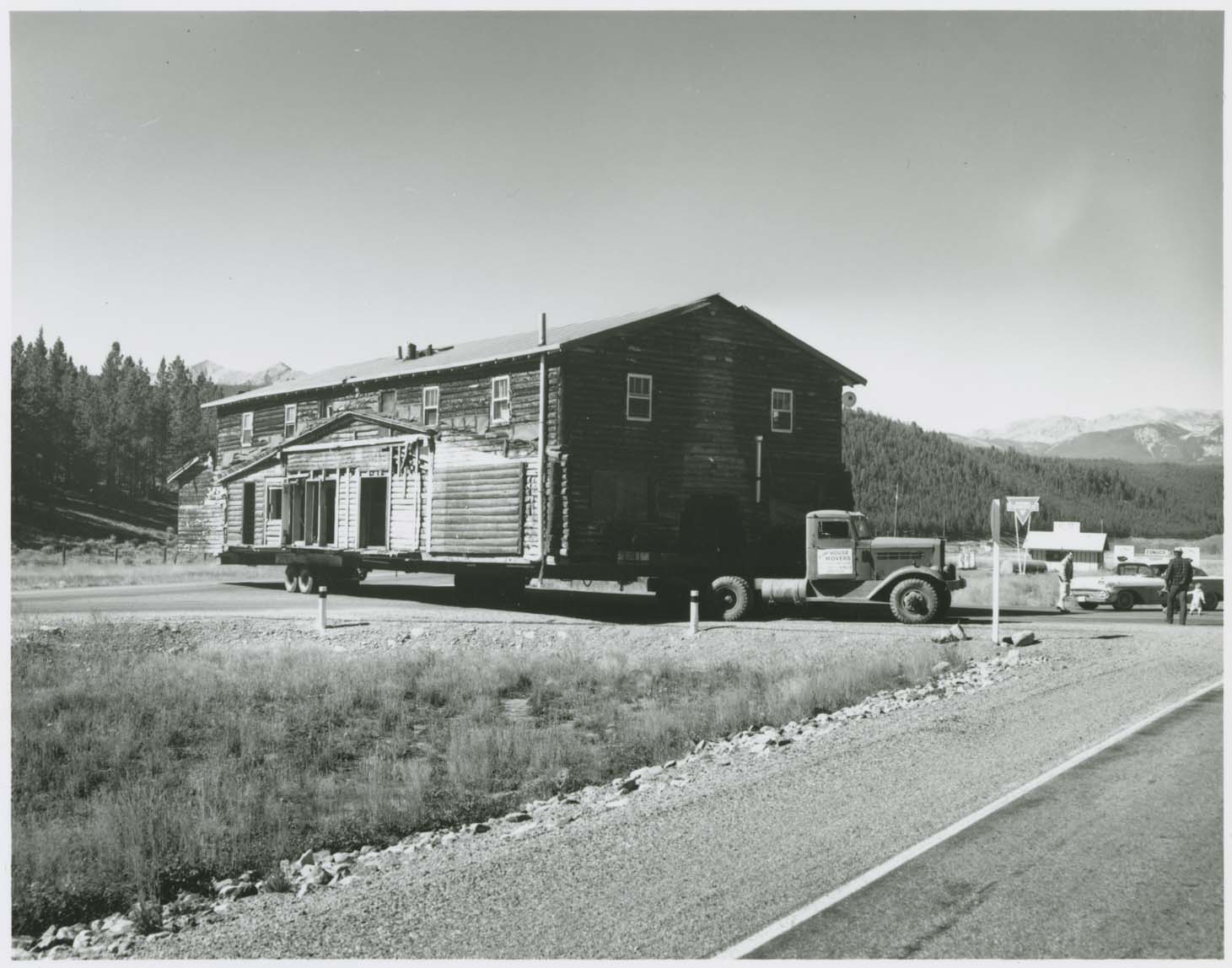
The Dillon Community Church, the Town Hall, an Odd Fellows Hall and the Arapaho Café and Motel were also carefully transported to the new town site and many remain in Dillon today.
Other buildings were also moved, but to neighboring towns: The Antler’s Café ended up in Frisco, The Mint Bar was relocated in what would eventually become Silverthorne, and the Hamilton-Dillon Hotel was moved to Breckenridge.
A new cemetery was purchased near the new town site and more than 300 graves were moved.
Once everything that was going to be moved was, the remaining buildings were demolished and construction of the dam was ready to begin.
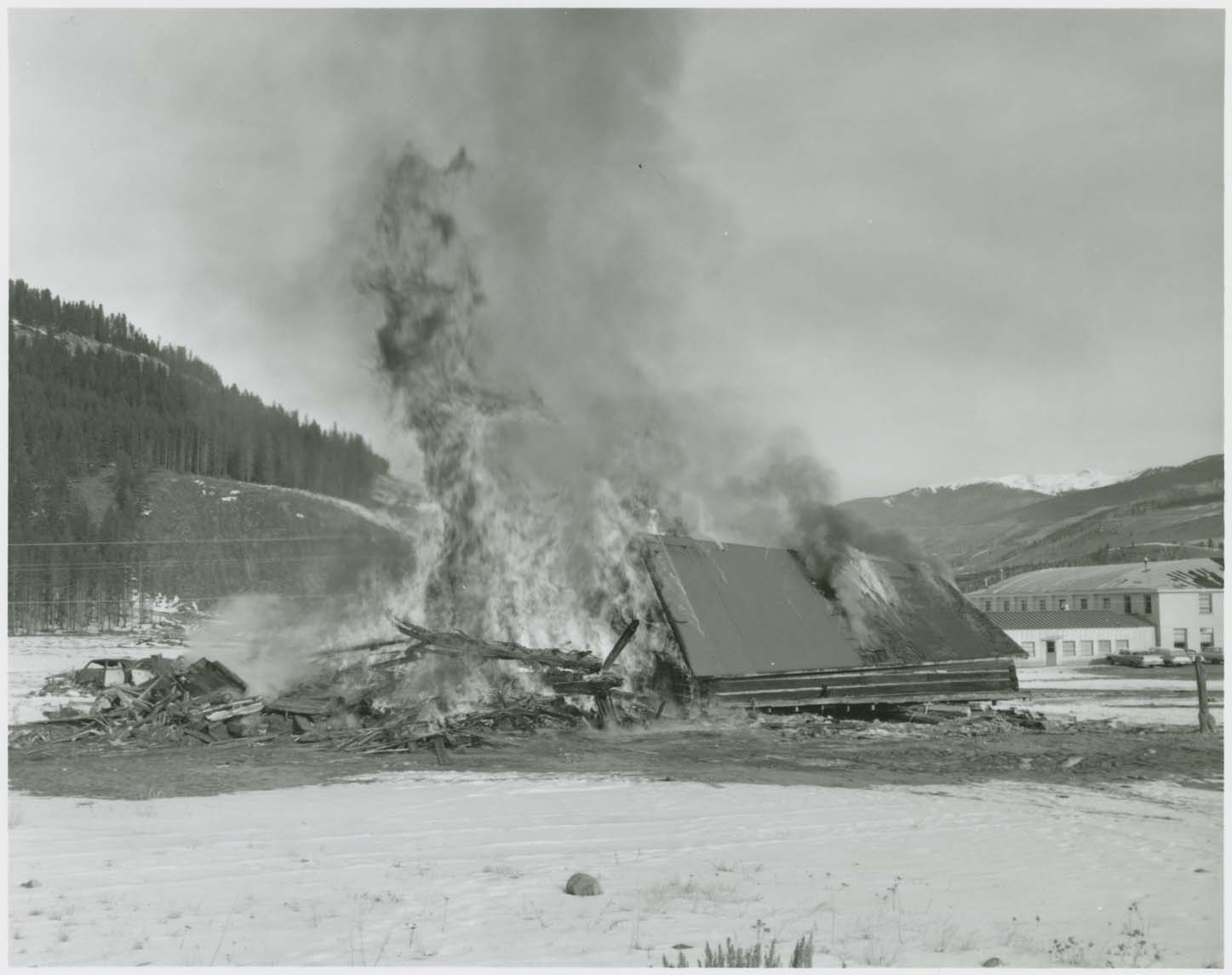
Dillon Dam Construction
Construction on the Dillon Dam officially began in 1961.
The idea was to divert water from the Blue River Basin, store it in the massive reservoir and transport it to Denver when needed.
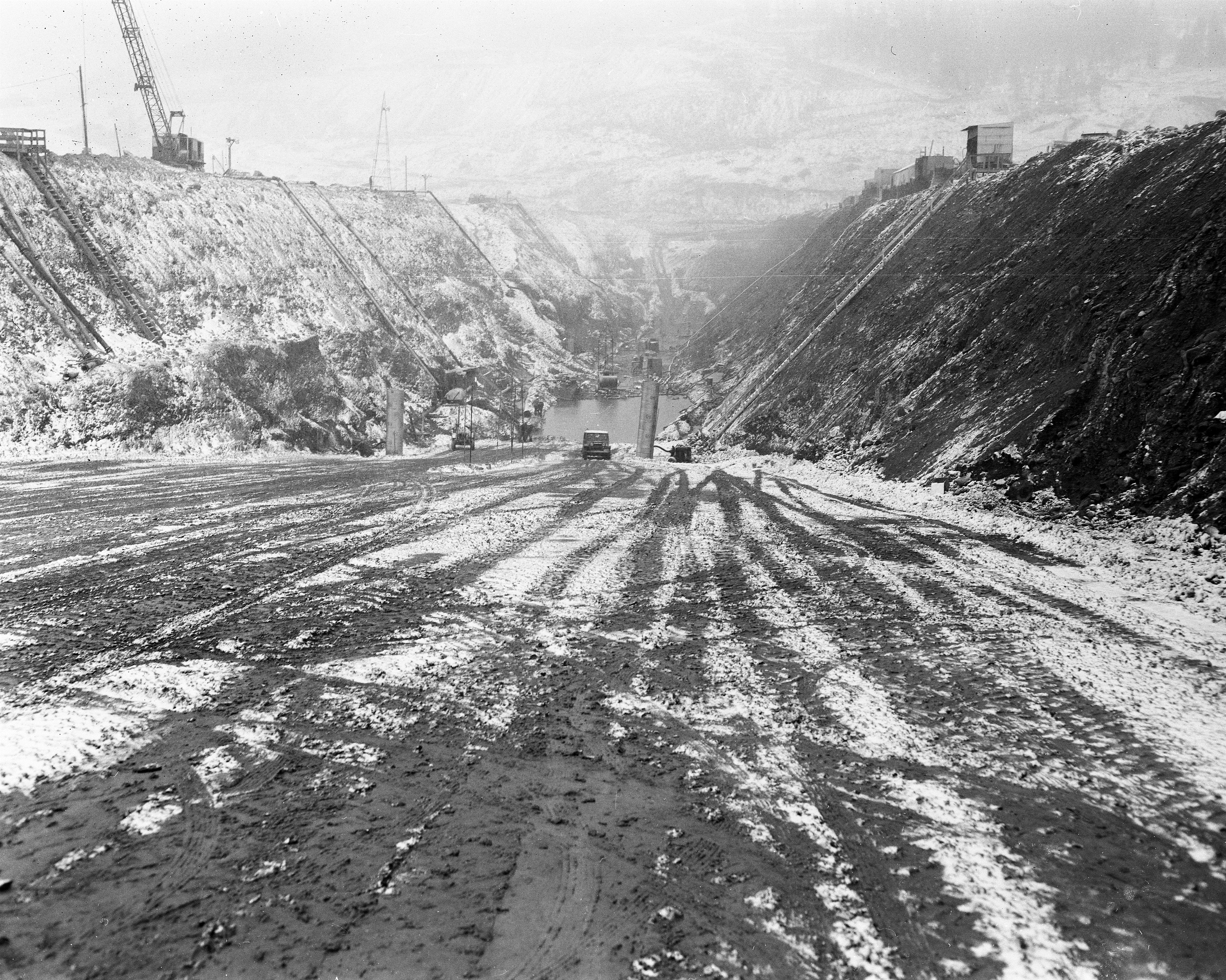
The only problem was that Dillon is nearly 60 miles west of Denver and on the other side of the Continental Divide. Denver Water’s solution? A tunnel.
The 23-mile Roberts Tunnel, the longest underground tunnel of its kind, was drilled between Dillon and Grant, on the other side of the Divide. It took 18 years for crews boring from each end to meet in the middle.
The dam itself was completed on July 1, 1963.
When water is needed, it flows from the reservoir, through the tunnel and into the South Platte River, which feeds into Denver’s water supply.
Today, the Dillon Reservoir has more than 26 miles of shoreline and can hold more than 83 billion gallons of water.

It’s also a popular spot for fishing, sailing, camping, hiking and biking.
The Dillon Ice Castles
A magical wonderland made entirely of ice opened to the public this December in Dillon.
After a few years away, Ice Castles returned to the state this winter season to bring Coloradans an icy playground to explore.
Ice Castles
In early December, building crews started work to grow and harvest icicles (about 10,000 icicles per day) in creating the acre-sized castle.
Ice sculptors spent over 4,000 hours shaping and placing the icicles alongside color-changing LED lights at Dillon Town Park.

The result is a massive structure with a frozen maze, tunnels, an ice throne and a 50-foot slide. The castle will remain open as long as the weather is cold enough.
Tickets cost $15.95 for adults and $10.95 for children 4-11 years old.
Visiting the town of Dillon
After the fairy-tale, visitors can head across Buffalo Street for a visit to the city's downtown area, which is small, but has several restaurants and shops worth checking out.
Pug Ryan's Brewery (104 Village Pl.), for example, serves steaks and house-made brews in a rustic cabin. And just around the corner is a local favorite pizza and brew stop: Lake Dillon Tavern & Pizza Co. (119 La Bonte St.), as well as a tasty Asian fusion restaurant, Cafe ProFusion.
Also nearby is Arapahoe Cafe & Pub Down Under (626 Lake Dillon Dr.), which serves Southwestern-style American fare and barbecue. Up the road a bit is a great Italian spot, Adriano's Bistro (240 Lake Dillon Dr.).
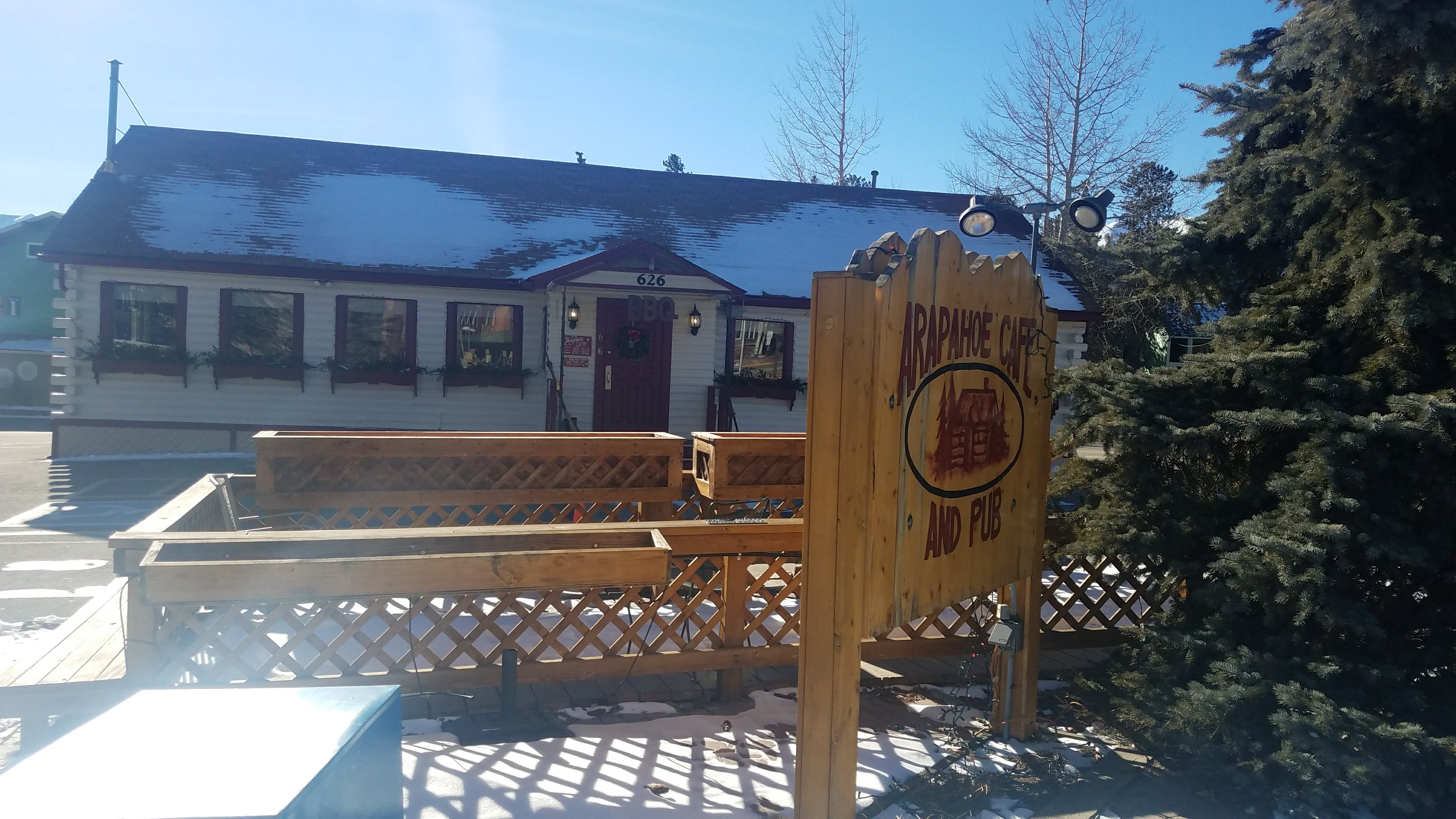
Dillon also has a couple places to find unique treasures — Gold Mine Thrift (130 Main St.), Summit Thrift (340 Fiedler Ave.) and A Furniture Find (119 La Bonte St. #204).
Dillon is also home to the Summit Historical Society's Schoolhouse Museum, an 1883 schoolhouse that shows what it was like for children attending school before the turn of the 20th century.

